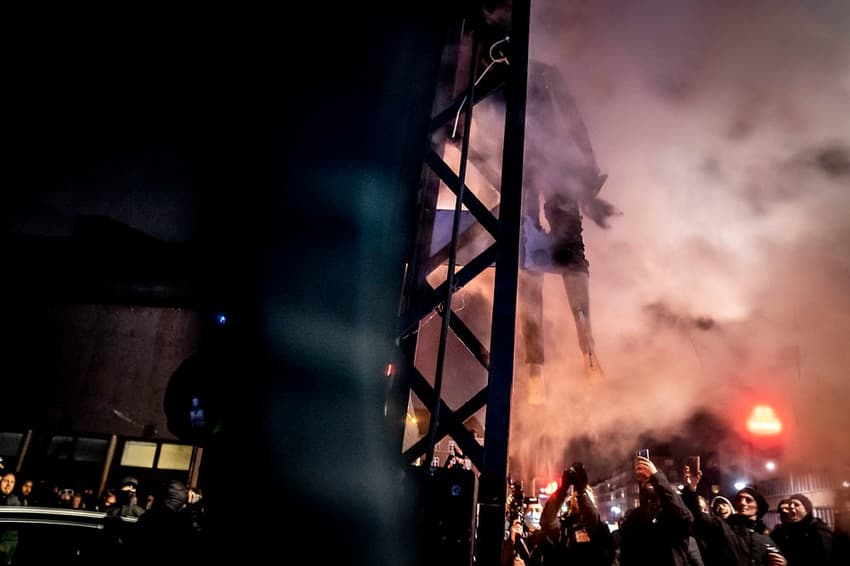Denmark releases three suspected over burning of PM effigy

The Danish high court on Monday released from custody three men who are suspected of making threats in a case relating to an effigy of Prime Minister Mette Frederiksen that was hung up during anti-lockdown protests.
A lawyer for one of the men, Ulrik Sjølin, confirmed their release to news wire Ritzau.
The three men have been detained in custody since January 24th and 25th, and their eight-week detention was a factor in the decision to release them.
READ ALSO: Denmark detains third man over burning of prime minister effigy
After a city court in Frederiksberg approved their release on Friday, the higher court upheld that decision following an appeal from the prosecutor.
The three men are suspected of making threats after an effigy of Prime Minister Mette Frederiksen was hung from a lamp post and burned during protests against coronavirus restrictions in January.
The effigy, on which a picture of Frederiksen’s face was affixed along with a sign bearing the words “she must and shall be culled”, was set on fire during protests in which around 1,000 people took part. The words are ostensibly in reference to the prime minister’s management of the outbreak of mutated coronavirus in mink in November 2020.
Police have not yet clarified who set fire to the effigy.
In addition to being suspected of making threats, the three men are also under suspicion under Danish law’s paragraph 113, which protects against attacks on the government and can give up to 16 years in prison. It is the milder misdemeanour – making threats – for which they were remanded in custody.
They could also be punished under an amendment which provides for harsher punishments for certain crimes committed in relation to the coronavirus pandemic.
The three have admitted to hanging the effigy from a lamppost during the January disturbances in Copenhagen but denied setting it alight.
Comments
See Also
A lawyer for one of the men, Ulrik Sjølin, confirmed their release to news wire Ritzau.
The three men have been detained in custody since January 24th and 25th, and their eight-week detention was a factor in the decision to release them.
READ ALSO: Denmark detains third man over burning of prime minister effigy
After a city court in Frederiksberg approved their release on Friday, the higher court upheld that decision following an appeal from the prosecutor.
The three men are suspected of making threats after an effigy of Prime Minister Mette Frederiksen was hung from a lamp post and burned during protests against coronavirus restrictions in January.
The effigy, on which a picture of Frederiksen’s face was affixed along with a sign bearing the words “she must and shall be culled”, was set on fire during protests in which around 1,000 people took part. The words are ostensibly in reference to the prime minister’s management of the outbreak of mutated coronavirus in mink in November 2020.
Police have not yet clarified who set fire to the effigy.
In addition to being suspected of making threats, the three men are also under suspicion under Danish law’s paragraph 113, which protects against attacks on the government and can give up to 16 years in prison. It is the milder misdemeanour – making threats – for which they were remanded in custody.
They could also be punished under an amendment which provides for harsher punishments for certain crimes committed in relation to the coronavirus pandemic.
The three have admitted to hanging the effigy from a lamppost during the January disturbances in Copenhagen but denied setting it alight.
Join the conversation in our comments section below. Share your own views and experience and if you have a question or suggestion for our journalists then email us at [email protected].
Please keep comments civil, constructive and on topic – and make sure to read our terms of use before getting involved.
Please log in here to leave a comment.